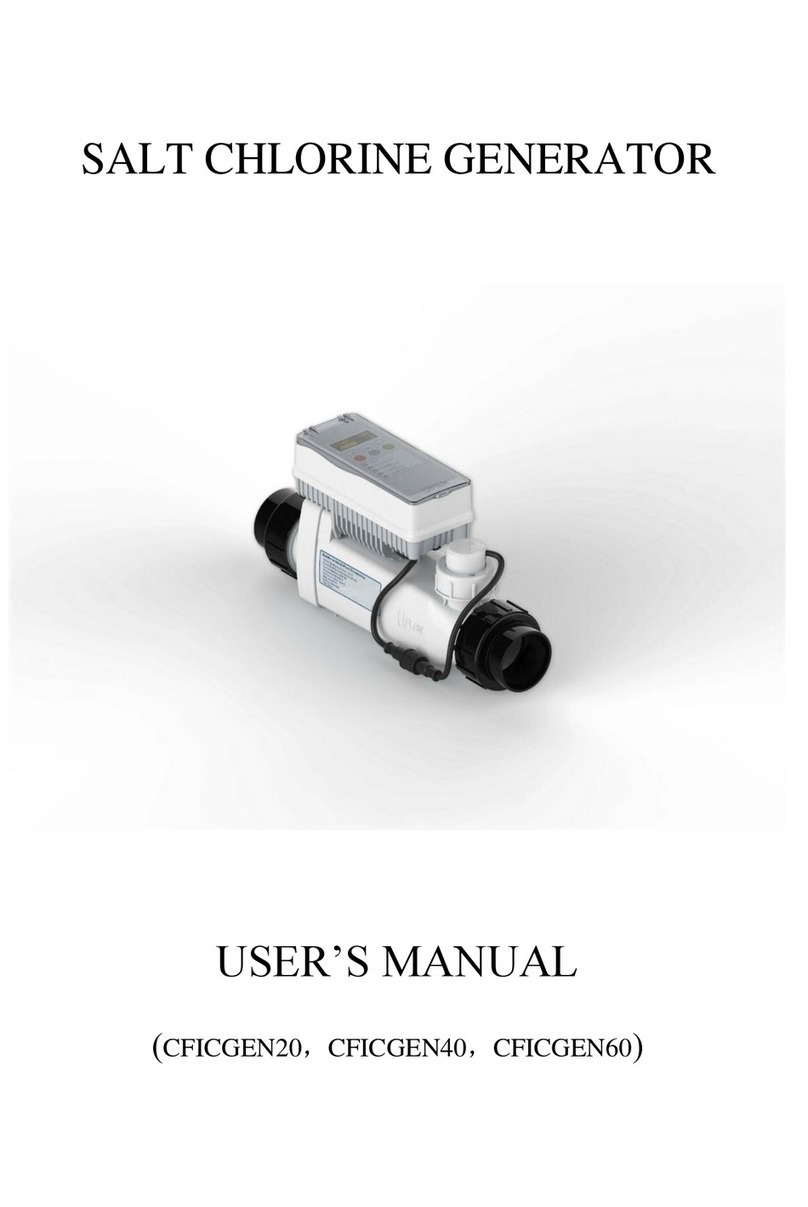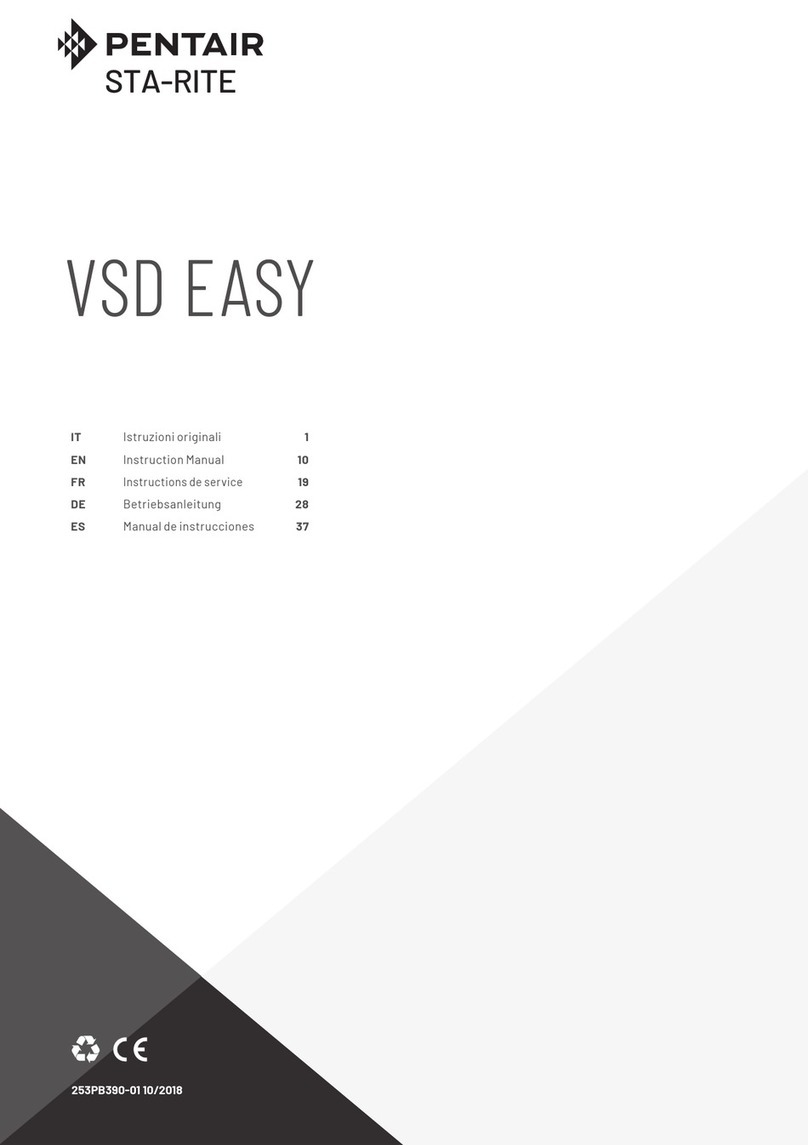
4
INTELLIZONE™ COMMERCIAL OZONE GENERATOR Installation and User's Guide
cell temperature is over 110F - resulting from
loss of cooling water flow. (Refer to APPENDIX
"B", TROUBLESHOOTING GUIDE.)
5. Water Backflow Detected: Red light indicates
water backflow from injector into generator.
(Refer to APPENDIX "B", TROUBLESHOOTING
GUIDE.)
External Components
1. Main Power Switch: Power switch is used for
system start-up and shut-down. Switch activates
the control system allowing the generator to
start up.
2. Flowmeter: Flowmeter controls and indicates
the oxygen flow through the system.
3. Circuit Breaker: Circuit breaker protects the
generator from over current conditions. Push
the breaker button to reset.
Internal Components
1. Variable Output Switch (optional): Adjusts
high voltage power supplied to the ozone
generator module controlling ozone output
concentration. Located on the outside of the
enclosure door.
External Devices that Control Ozone Production
The devices turn ozone production on or off
based on programmed level set points. Refer
to Figure 5b and 6b for connection details.
1. ORP Controller (optional): The ORP controller
receives a millivolt (mV) signal from the ORP
sensor mounted in the process water line. ORP
(Oxidation-Reduction Potential) is a measure
of the relative oxidation strength of the water.
As ozone is added to the water system the ORP
level will rise. As ozone is used up in the water
system the ORP level will drop. The ORP
controller continuously analyzes the sensor
signal, compares it to the setpoint that has
been programmed, indicates the ORP level on
the digital display, and relays the signal to the
ozone generator.
2. Dissolved Ozone Monitor (optional):
Monitoring system designed for the continuous
measurement of ozone gas in solution. The
operating range of the system may be selected
by the user from 0-2.00 PPM or from 0-20.00
PPM. The basic sensing element used is
polarographic membraned sensor which
measures ozone directly.
External Devices that Control System
Power
The devices turn power to the ozone generator
on or off. Examples of such devices would be an
ambient ozone monitor or flow switch. Refer to
Figure 5b and 6b for connection details.
Internal Components
1. Ozone Cell Assembly: Cells are made of two
aluminum halves. Enclosed in the aluminum
halves are a ceramic tube, coil type high voltage
electrode and a PTFE rod.
2. High Voltage Supply(s): Power supplies raise
incoming line voltage and frequency to deliver it
to the cells. Each power supply is rated at 100W.
3. Air Compressors: Compressors produce and
supply compressed air to oxygen concentrator.
4. Oxygen Concentrator: Supplies concentrated,
dry, oxygen feed gas to the ozone generator.
5. Low Limit Vacuum Switch: If the vacuum in the
ozone output supply line falls below 1.5 in. Hg
the switch will open causing the system to shut
down.
6. Vacuum Regulator: Regulates the oxygen
flow into the generator cell based on a vacuum
setpoint (factory set to 3-5 in. Hg). When the
sufficient suction is being developed by the
injectors downstream the regulator will allow full
flow to pass. As suction is reduced, flow is
restricted proportionally to maintain the vacuum
set point. If suction is lost completely, flow is
cut off.
7. Water Backflow: The backflow detector senses
water present in ozone tubing in generator. If
water is detected, system will close solenoid
valve to prevent additional water backflow from
occuring. Water in the generator will cause
severe damage to the high voltage electrodes.
8. Ventilation Fan: Cooling fan operates when
main power switch is “ON”.
9. Air Filter: Filter cleans ventilation air entering
the enclosure.
10. Door Interlock Switch: Interlock switch will
shut down entire system if door is opened.
Securing the door will bring the system back
into operation.
11. Relay Panel: Contains control relays for system
interlocks, indicator lights and main power
control.
12. Hour Meter: Indicates total system operating
time in hours.





























